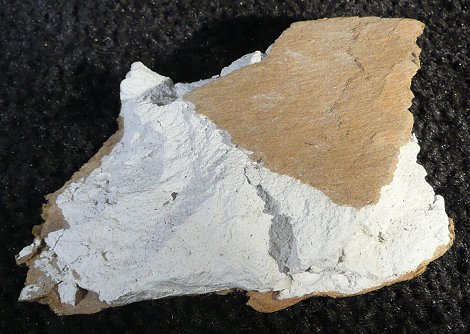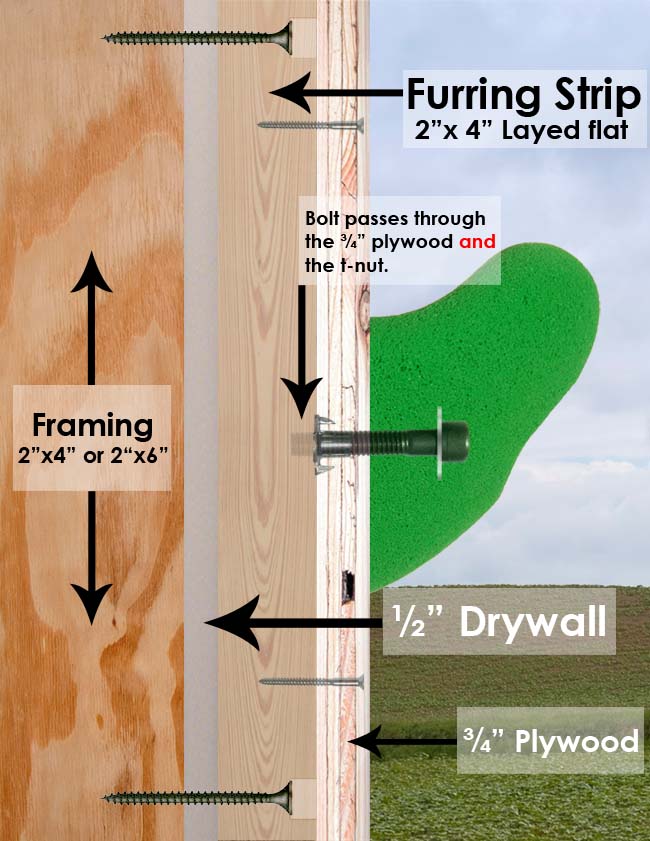Drywall is NEVER Okay
Drywall is Never Okay When It Comes to Climbing Walls
First, let's respond to the most common questions on this topic.
- Customer: "We put blocking behind the drywall."
Atomik Answer: Drywall is never okay. - Customer: "We covered 3/4" plywood with drywall. Will this work?"
Atomik Answer: Drywall is never okay. - Customer: "My kids are small. They are all under 60 pounds. Drywall on top of wood should be fine."
Atomik Answer: Drywall is never okay.
Here's why drywall is never okay. Drywall is composed of a layer of gypsum rock sandwiched between two special paper layers. The drywall looks pretty on the interior walls. That's all it does concerning this article. It is not as strong as a building material, as you might think. If you have ever handled a piece of drywall and dropped it on its corner, it will crush the edge quickly. A climbing hold when climbed on achieves the same result. A fatigue load generated on the gypsum starts the crushing. Gypsum is weak compared to 3/4" plywood.
The scientific definition of fatigue loads:
Fatigue load is the weakening of a material caused by cyclic loading that results in progressive and localized structural damage and the growth of cracks. Once a fatigue crack has been initiated, each loading cycle will grow the crack a small amount, typically producing striations on some parts of the fracture surface. The crack will continue to grow until it reaches a critical size, which occurs when the stress intensity factor of the crack exceeds the fracture toughness of the material, producing rapid propagation and typically complete fracture of the structure.- Wikipedia
The Climbing Industry answer:
When you attach a climbing hold through drywall and then climb on it, the hold pulls down microscopically. The force from this leverage generates a load on the drywall. A little bit each time, the flex from the grip crushes the gypsum in the drywall. Eventually, the gypsum breaks to a point where the climbing holds move even more.
Now you have a hold wiggling on the wall. This movement has now created a flexing motion on the bolts/screws holding the grip to the wall. Now we have a fatigue load on the hardware.

Do This for Screw-on Holds
You have drywall that you have supported on the back with blocking or plywood. That isn't good, but here is the fix.
The step now is to attach a 3/4" sheet of plywood directly on top of the drywall. When attaching holds, be sure that your screws do not penetrate so deep as to hit the electrical and plumbing in the wall. A climbing only needs 3/4" embedment of the screws for maximum hold.
Do This for Bolt-on Holds
You have drywall that you have supported on the back with blocking or plywood. That isn't good.
The step now is to attach furring strips on top of the drywall. You want to connect the furring strips through the drywall and into the wall studs. Be sure to use the correct length of screw not to hit the electrical and plumbing in the wall. Preferably run the furring strips (You can use 2"x4"s) flat against the wall and run them horizontally, then cap the sides.
For spacing of the furring strips, 2' foot on centers is a good ratio. It is okay to share the furring strip that ends up on a seam with the neighboring panel.



